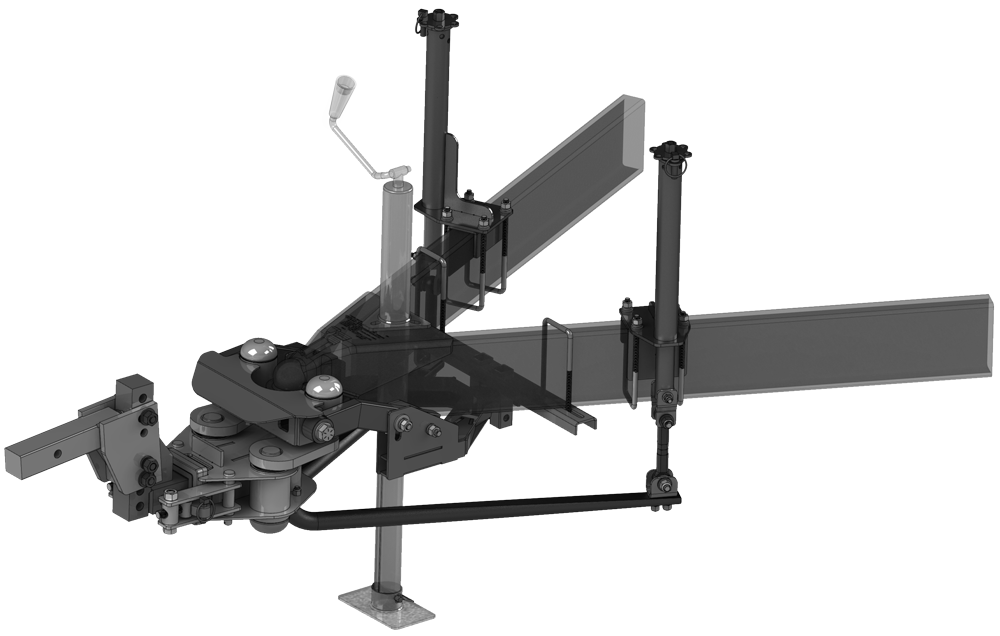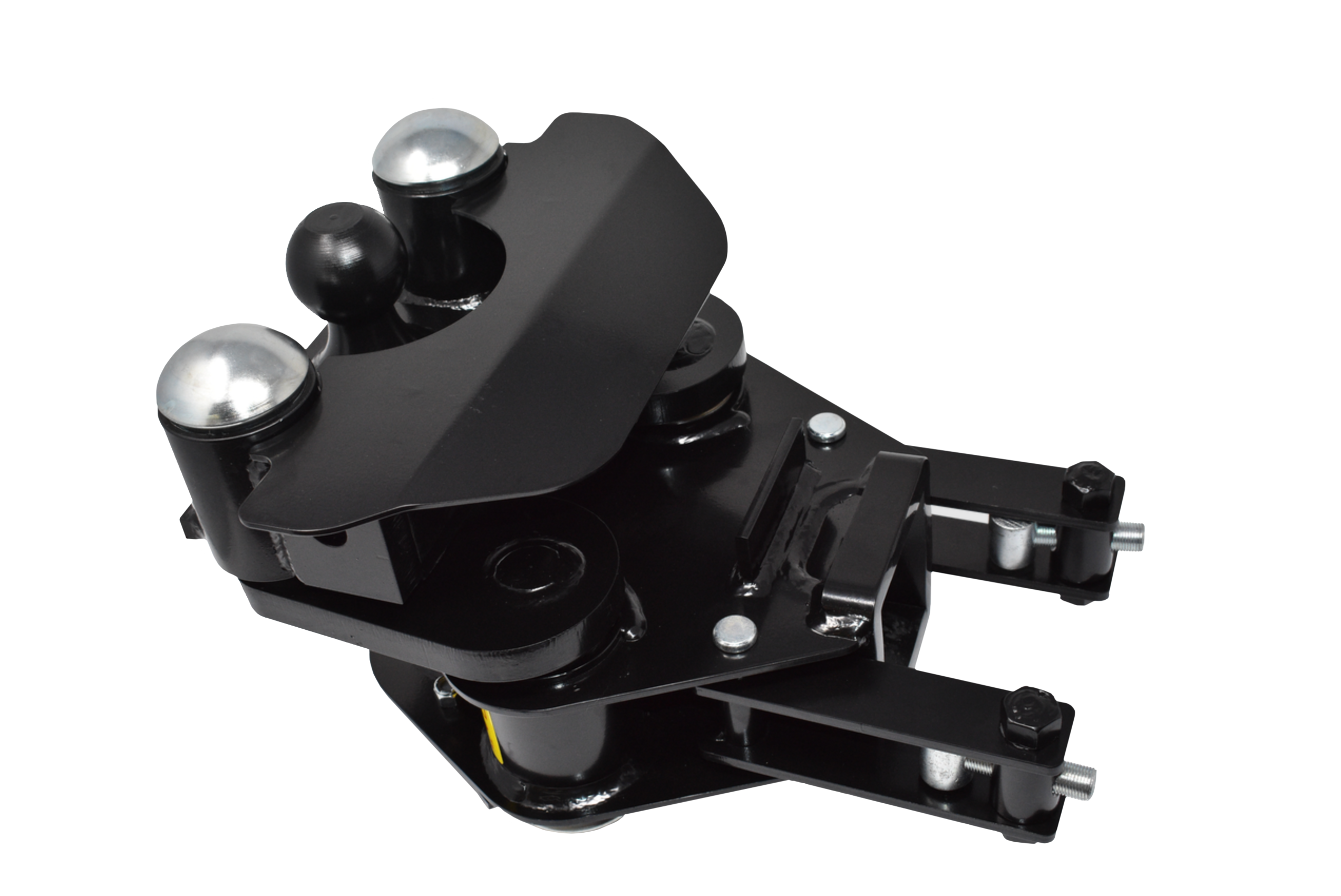Damping of trailer sway by a friction between two surfaces. The friction control works by "stiffening" the connection between TV and TT. This causes the combined mass and rotational inertia of the TV and TT to resist the forces which are attempting to make the TT "sway".
Understanding Sway
It is our hope that by learning the facts you will be better equipped to reduce and prevent trailer sway, enjoy your RV, and make many happy memories.
Ask anyone who has hitched a trailer to the rear end of a vehicle and pulled it down the road about trailer sway and you'll be in for an earful of advice and information. The "white knuckle" effect of the trailer moving around behind a vehicle tends to make for a memorable experience. That experience makes for a good discussion topic around campfires, parking lots, RV dealerships, internet forums and anywhere else that people towing trailers gather. Unfortunately, a lot of the information doled out in these places can result in more bad experiences for the person taking the advice.

Towing Definitions
The maximum total load of a towed combination.
The maximum allowable load of a trailer that is loaded. It includes the weight of the trailer itself plus the fluids and cargo. Note: this is sometimes designated as the GVWR of the trailer.
The maximum allowable total weight of a vehicle or trailer that is loaded. It includes the weight of the vehicle or trailer itself plus the passengers, fuel and cargo.
A movement back and forth between two limits over time.
Amplitude - The displacement of the oscillation wave.
The horizontal distance from the center of the rear axle to the rear end of the tow vehicle.
The point at which the towed trailer pivots to create a tow angle.
Projection of the trailer's effective pivot point.
The static downward force exerted on the hitch ball by the trailer coupler.
The angle created between the tow vehicle and trailer when the trailer moves away from the centerline of the tow combination. A trailer in line with a tow vehicle has zero degrees of tow angle. A tow angle of zero to a maximum of ninety degrees allows the trailer to be towed around a corner.
The allowable weight limit for a tow vehicle. GCWR minus the GVWR of the tow vehicle.
Oscillating tow angles. This last definition is important in our discussion here. A tow angle created by turning a corner IS NOT trailer sway. Trailer sway is defined as OSCILLATING TOW ANGLES. That is multiple tow angles over a period of time. The trailer continues to oscillate away from the centerline of the tow combination at various amplitudes. Clear? I hope so because this is where most of the discussions I have witnessed break down.
The act of distributing the load exerted on the hitch ball, the tongue weight, onto the tow vehicle and trailer axles.
The horizontal distance between the center of the front axle and the center of the rear axle on the tow vehicle.
The side to side movement of the trailer on the hitch ball.
Trailer Sway Causes
Typical highway speeds have become much greater over the last 50 years. The speed at which you decide to tow your trailer may be the single greatest factor in controlling trailer sway. Unfortunately, tests show that any speeds greater than 45mph tend to cause almost any trailer to begin to sway. With traffic traveling at much greater speeds it isn't practical, and most of the time illegal, to travel at a speed that will control trailer sway.
Winds blowing perpendicular against the side of a towed trailer push the trailer and pivot it on the hitch ball creating a tow angle. The greater the surface area of the side of the trailer, the greater the force will be at any given wind velocity. Towing in high winds is never a good idea and should be done cautiously if necessary.
Winds can gust and increase in velocity due to weather. Winds can also be described as gusting when a high wind is blocked by a tree line or a bridge overpass and you clear this blockage while towing. Your trailer goes from a relative low side force to much higher side force that pivots the trailer on the hitch ball and creates a tow angle.
A bow wave is a wind produced by a large semi-truck, box truck or van pushing its way through the air on the highway. This wind travels around the truck and down the sides creating a wind disturbance in the adjacent lanes. This wind disturbance creates a sudden high to low pressure in the air traveling down the side of your trailer. The bow wave, as with the other wind disturbances, creates a tow angle by pushing the trailer and pivoting it on the hitch ball. The bow wave produces a "sucking" feeling in some combinations that feels like the entire tow combination is being pulled into the other lane.
With any type of travel across this great country you'll realize there are quite a few roads that need work. These uneven, poor roads can make a trailer become unbalanced and cause it to pivot on the hitch ball creating a tow angle.
Amplitude - The displacement of the oscillation wave.
Towing downhill can allow your trailer to roll faster than the tow vehicle. The tow vehicle is geared to slow down when you let your foot off the accelerator. However, trailers are not equipped with this feature. When the trailer is traveling at a higher rate of speed than the tow vehicle it can begin to yaw.
The fact is that some trailers are designed better for towing than others. Trailer design includes a lot of different variables that need to be addressed to properly balance the trailer for towing. Even with a good trailer design the designer can have a hard time determining what the optimal layout of the trailer should be because of the added dimension of the trailer being used by so many different customers.
Trailers are very sensitive to where you place your load your cargo. Your black and gray water tanks, your supplies, your clothing and anything else you carry with you will change the weight of the trailer and how that weight is distributed throughout your towed combination.
When a weight distribution hitch is not adjusted properly it can cause your trailer to have either too much tongue weight or not enough tongue weight to avoid inducing sway.
Your best defense against sway
Now that you know what trailer sway is and what causes it, protect your vehicle and your journey with the hitch designed to prevent sway from starting.

